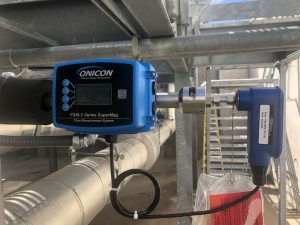
Lord Kelvin, the Scottish mathematician and physicist, is famously attributed with having said “If you cannot measure it, you cannot improve it” and “To measure is to know”. The same line of thinking applies to flow measurement.
In their most basic form, flow meters provide instantaneous flow rate and flow totalization information to the end user or building control system. Flow meter data also plays a role in the more complex system management and optimization functions found in today’s high-performance buildings. In this blog post, we will discuss some of the common ways that flow meter data can be used to your advantage.
The Need for Flow Measurement
Owners of today’s high-performance buildings are faced with an ever-growing need for flow and energy measurement devices. While government mandates and industry standards lay the framework for baseline flow monitoring, high-performance buildings require additional metering points in order to implement the complex control and plant optimization strategies required to meet modern day sustainability and energy conservation directives. Further demand for metering is driven by the need to monitor and verify equipment, building, and system performance. They provide the basis for net energy billing and cost allocation in multi-tenant buildings and much more.
Equipment Monitoring and Control
Modern automation systems require nearly instantaneous and accurate feedback loops in order to achieve, maintain, and verify the highest levels of performance. Flow and energy measurement devices play critical roles in these feedback loops, providing real time flow, energy, and temperature data to the building automation system via analog output or network communication. The flow meter data may then be used to optimize performance. In a chilled water system, this typically means instantaneously adjusting the distribution of chilled water, controlling return temperature to maintain a fixed temperature differential (ΔT) across supply and return lines, and staging of chillers based on demand. These control strategies are instrumental in limiting energy waste and improving the efficiency of systems, while controlling costs.
Calculating Operating Efficiency
In addition to system monitoring and control, flow meter data can be used to calculate operating efficiency in a variety of applications. Boiler efficiency and chiller CoP are real world metrics used to monitor and verify the performance of boilers and chillers instantaneously. These same performance metrics are being applied to overall plant efficiencies as well. By collecting readings focused on optimization, meters can indicate areas of low performance (leaks, damage, fouling, etc.) in a system which may be responsible for increased costs and energy consumption.
High Performance and Sustainable Building Requirements
As sustainability and green initiatives become more prevalent, building owners and designers strive to meet LEED (v4) and ASHRAE (22, 36, 90.1 and 189.1) high performance building standards. These standards provide guidance for designing, building, and operating high performance green buildings. Many of these include an expanded focus on metering and system monitoring to ensure that buildings and systems function efficiently and safely while meeting conservation and sustainability goals.
Allocation of Costs (Metering)
Through a combination of traditional metering and submetering, flow meters are often used for net energy billing and cost allocation. Flow and energy meter readings provide real world consumption data that helps building owners accurately allocate costs. Net energy billing encourages conservation and identifies energy hogs, which can be particularly useful in multi-tenant properties and campus environments. Submetering also aids in identifying sources of energy waste, which can then be repaired or eliminated – reducing expenses and streamlining energy cost management.
In summary, effectively implementing the flow meter data provided is key to equipment monitoring and control, calculating operating efficiency, monitoring system performance to ensure compliance with standards, and accurately allocating costs. Effective flow measurement implementation is essential to maintain long term accuracy, reliability and repeatability within your HVAC systems.
ONICON manufactures flow meters for HVAC applications. Visit our product page for more about our line of highly accurate and reliable flow measurement solutions.
 COVID-19 RESPONSE
COVID-19 RESPONSE